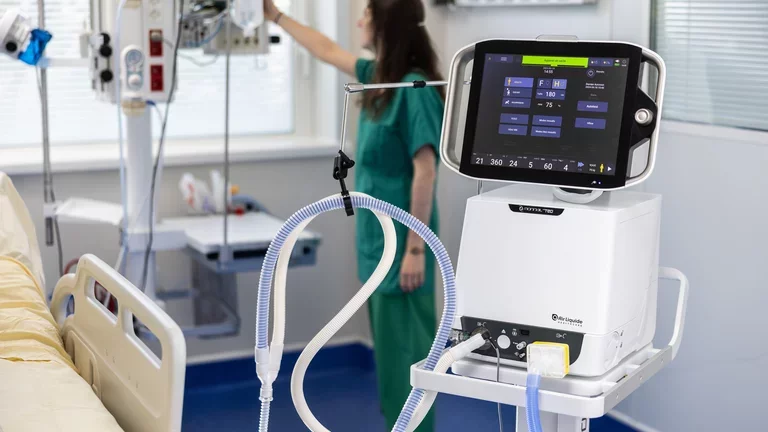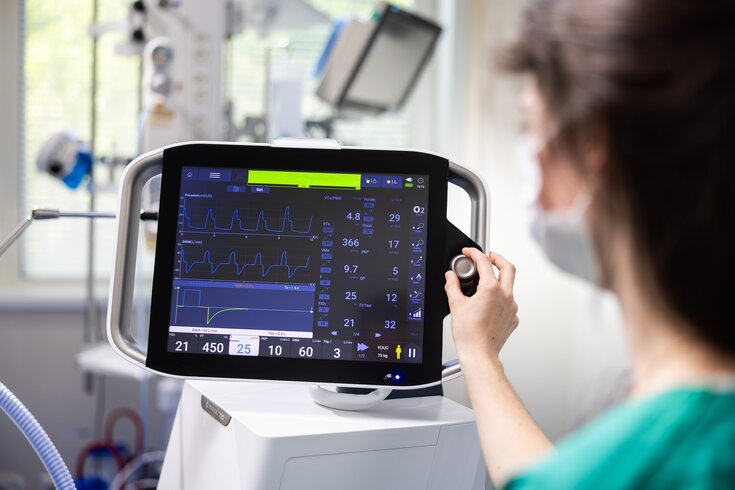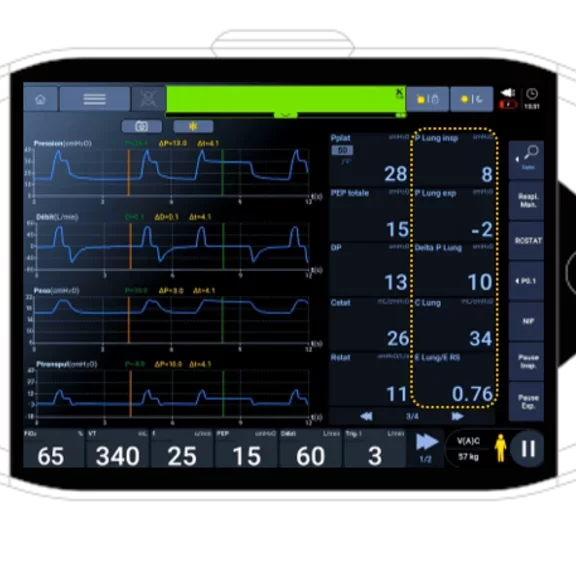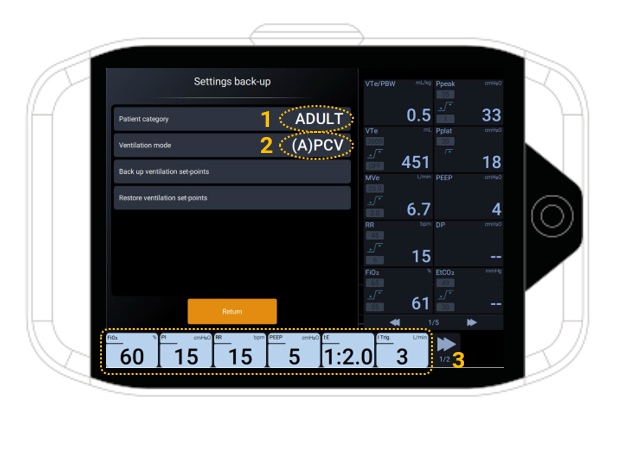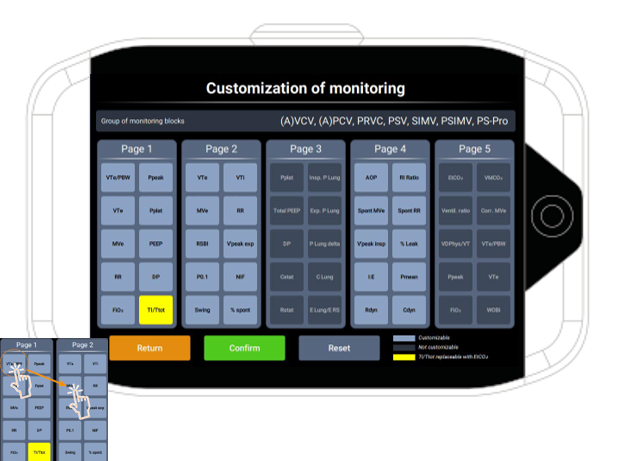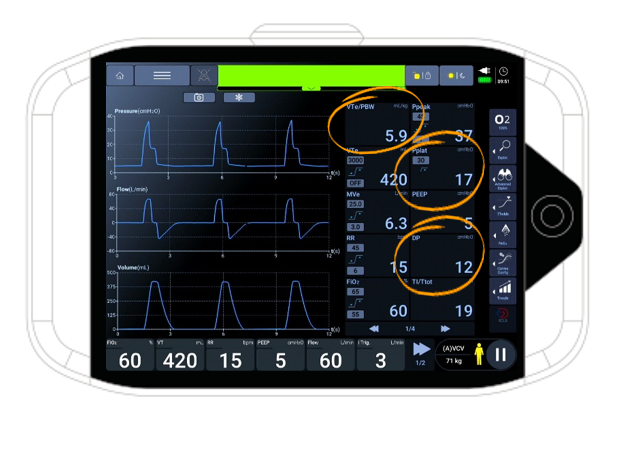The ICU ventilator combining simplicity and advanced features supporting the clinician in decision-making.
In the increasingly complex environment of intensive care units, the Monnal™ TEO ventilator combines ease of use with advanced features to manage critically ill patients.
Inheriting over 50 years of experience in mechanical ventilation, Monnal™ TEO provides respiratory physiology assessment tools to assist clinicians in developing therapeutic strategies, along with ventilatory modes adapted for intensive care and critical care units.
Ease of use
A customizable interface that adapts to the caregivers’ needs
As the last member of the Monnal family, MonnalTM TEO inherits the strengths of MonnalTM T60, including the valued “Dynamic help windows”.
For every modification of the ventilation setting, the clinician is guided by instant graphical assistance, granting an instant understanding of the changes made, while keeping the control.
MonnalTM TEO is characterized by its 15” capacitive technology touchscreen and its fully customizable graphical interface. The user has the possibility to choose the number and type of curves to display and whether or not to associate them with loops.
5 layouts are available
The default ventilation set-points can be completely personalized during initial setup* to be adapted to intensive care unit protocols.
Select the patient category (1), the ventilation mode (2). Set each parameter and save the settings (3). Reproduce for each patient category and for each ventilation mode if needed.
The organization of the 10 monitoring blocks is also adaptable to the wishes and needs expressed by clinicians.
Protective lung ventilation
Monnal™ TEO enables the delivery and monitoring of protective ventilation for the most critically ill patients.
The 15” Monnal™ TEO screen allows the visualization and customization of 10 simultaneous monitoring pads, and curves. The evaluation of ventilation with the monitoring of VTe/PBW, Pplat, Ppeak, and Driving pressure (DP) on the main page, allows doctors and caregivers to have relevant information on the patient's condition.
Find out more
1. Ventilation with Lower Tidal Volumes as Compared with Traditional Tidal Volumes for Acute Lung Injury and the Acute Respiratory Distress Syndrome. The New England Journal of Medicine. 2000;8.
2. Amato MB, Meade MO, Slutsky AS, Brochard L, Costa EL, Schoenfeld DA, Stewart TE, Briel M, Talmor D, Mercat A, Richard JC, Carvalho CR, Brower RG. Driving pressure and survival in the acute respiratory distress syndrome. N Engl J Med. 2015 Feb 19;372(8):747-55.
3. Bellani, G. et al. Epidemiology, Patterns of Care, and Mortality for Patients With Acute Respiratory Distress Syndrome in Intensive Care Units in 50 Countries. JAMA 315, 788 (2016).
Esophageal Pressure Monitoring
The ventilator displays esophageal pressure (Peso) and continuously calculates transpulmonary pressure (Plung) through advanced curves and monitoring tools.
In intensive care, for passive patients, monitoring esophageal pressure helps to phenotype the patient by revealing the pressure that distends the lung and the pressure that moves the chest wall.
For active patients, during spontaneous ventilation, monitoring esophageal pressure allows measurement of the patient’s respiratory effort, detection of patient-ventilator asynchronies, and helps maintain the delivery of protective ventilation.
Legal Notice
Monnal™ TEO is a blower-powered ventilator used to treat infants (weighing at least 3 kg), children and adults. It is used for patient ventilation to compensate for and mitigate respiratory failure.
Manufactured by Air Liquide Medical Systems - Conformity assessment: GMED 0459
Air Liquide Medical Systems is committed to an environmental approach with a quality-environment management system certified ISO 14001:2015.
